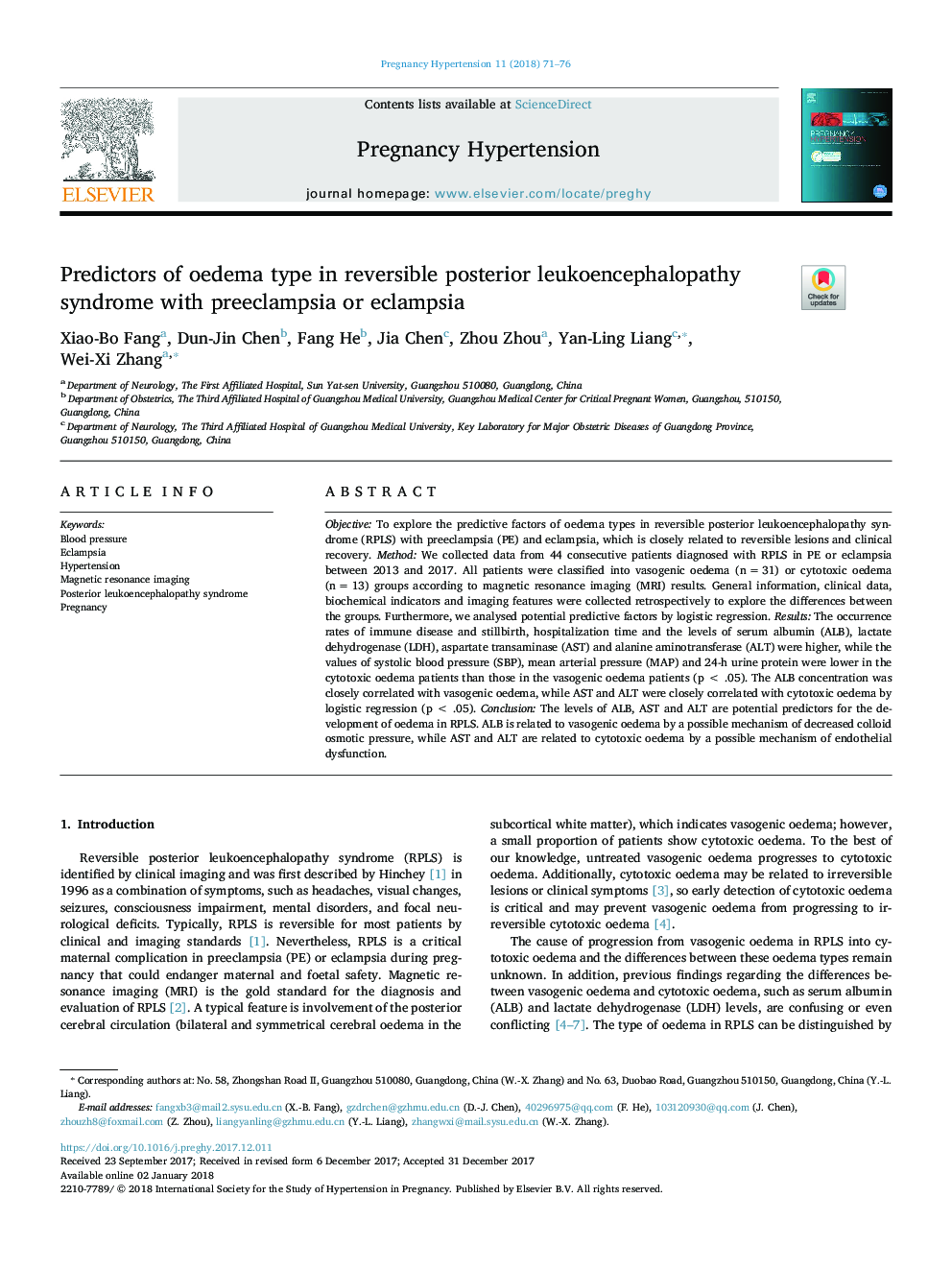| Article ID | Journal | Published Year | Pages | File Type |
|---|---|---|---|---|
| 8675082 | Pregnancy Hypertension: An International Journal of Women's Cardiovascular Health | 2018 | 6 Pages |
Abstract
Objective: To explore the predictive factors of oedema types in reversible posterior leukoencephalopathy syndrome (RPLS) with preeclampsia (PE) and eclampsia, which is closely related to reversible lesions and clinical recovery. Method: We collected data from 44 consecutive patients diagnosed with RPLS in PE or eclampsia between 2013 and 2017. All patients were classified into vasogenic oedema (nâ¯=â¯31) or cytotoxic oedema (nâ¯=â¯13) groups according to magnetic resonance imaging (MRI) results. General information, clinical data, biochemical indicators and imaging features were collected retrospectively to explore the differences between the groups. Furthermore, we analysed potential predictive factors by logistic regression. Results: The occurrence rates of immune disease and stillbirth, hospitalization time and the levels of serum albumin (ALB), lactate dehydrogenase (LDH), aspartate transaminase (AST) and alanine aminotransferase (ALT) were higher, while the values of systolic blood pressure (SBP), mean arterial pressure (MAP) and 24-h urine protein were lower in the cytotoxic oedema patients than those in the vasogenic oedema patients (pâ¯<â¯.05). The ALB concentration was closely correlated with vasogenic oedema, while AST and ALT were closely correlated with cytotoxic oedema by logistic regression (pâ¯<â¯.05). Conclusion: The levels of ALB, AST and ALT are potential predictors for the development of oedema in RPLS. ALB is related to vasogenic oedema by a possible mechanism of decreased colloid osmotic pressure, while AST and ALT are related to cytotoxic oedema by a possible mechanism of endothelial dysfunction.
Keywords
Related Topics
Health Sciences
Medicine and Dentistry
Cardiology and Cardiovascular Medicine
Authors
Xiao-Bo Fang, Dun-Jin Chen, Fang He, Jia Chen, Zhou Zhou, Yan-Ling Liang, Wei-Xi Zhang,
